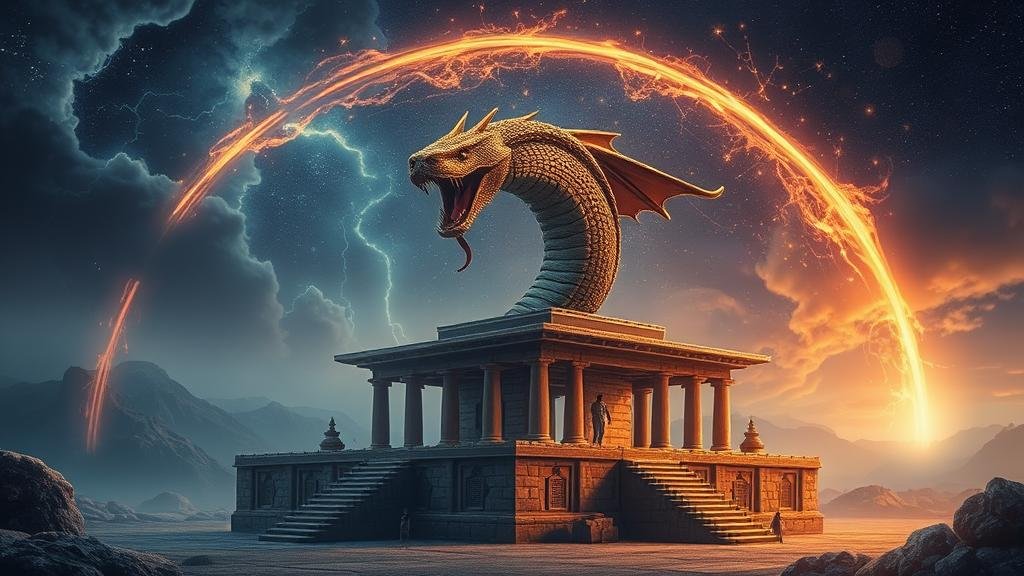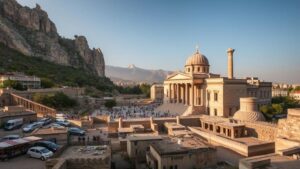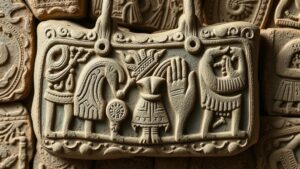Investigating the “Temple of the Celestial Serpent,†tied to myths of divine guardians.
Investigating the Temple of the Celestial Serpent: Myths of Divine Guardians
The Temple of the Celestial Serpent, known in ancient Mesoamerican culture as the Temple of Quetzalcoatl, is an architectural marvel that intertwines human ingenuity with the mysterious narratives of divine guardians. Located in the ancient city of Teotihuacan, approximately 30 miles northeast of modern-day Mexico City, this temple stands as a testament to the power of mythology and its enduring impact on cultural practices. This article delves into the origins, significance, and enduring myths associated with the structure, providing a comprehensive overview of its role as a spiritual and cultural symbol.
The Historical Context of Teotihuacan
Teotihuacan flourished between 1 CE and 500 CE, becoming one of the largest urban centers in the ancient world, with an estimated population of over 100,000 people at its peak. city is famous for its vast religious complexes, including the Temple of the Celestial Serpent, which is intricately linked to the broader cosmological beliefs of the Mesoamerican peoples.
The architecture of the temple reflects typical Mesoamerican construction styles, featuring colossal stone structures adorned with intricate carvings that depict serpentine motifs. The temple itself was built in a terraced shape, with each level dedicated to different deities, showcasing the peoples reverence for divine guardians.
Quetzalcoatl: The Feathered Serpent
Quetzalcoatl, often translated as the Feathered Serpent, is one of the most significant deities in Mesoamerican mythology. Represented as a serpent with feathers, Quetzalcoatl embodies the duality of nature–earth and sky. This deity plays a multifaceted role in the mythology surrounding the temple, symbolizing creation, knowledge, and the divine guardianship of humans.
- Quetzalcoatl is credited with the creation of humanity according to the myths of the Aztec and other Mesoamerican cultures.
- He represents the synthesis of opposing forces, such as the earthly and the heavenly, providing a model for harmony.
Legends and Myths Surrounding the Temple
Numerous myths are tied to the Temple of the Celestial Serpent, with local lore attributing the origins of the temple to Quetzalcoatl himself. One particular legend claims that the temple was built on the site where the deity descended from the heavens to impart knowledge and civilization to humankind. This narrative underscores the temples role as a beacon of enlightenment and a site of pilgrimage for worshippers seeking divine favor.
- The myth of the Five Suns suggests that Quetzalcoatl contributed to humanitys survival through his interventions during the age of chaos.
- Another legend notes that Quetzalcoatl promised to return, which has continued to resonate in cultural narratives and religious practices.
Architectural Features of the Temple
The architectural design of the Temple of the Celestial Serpent is remarkable not only for its scale but also for its intricate symbolism:
- The façade is adorned with bas-reliefs and sculptures depicting feathered serpents, which symbolize the connection between the earth and the heavens.
- Inside the temple, chambers and altars were likely used for ceremonial purposes, reinforcing the temples role as a sacred space.
Archaeological excavations have revealed ceremonial offerings, including numerous artifacts that suggest rituals directed toward appeasing Quetzalcoatl and seeking his protection as a guardian deity.
Modern Interpretations and Cultural Impact
Today, the Temple of the Celestial Serpent remains a focal point of cultural identity and heritage within Mexico. myths surrounding Quetzalcoatl are taught in schools, and the temple itself is a UNESCO World Heritage site, attracting tourists and scholars alike. The ongoing fascination with Mesoamerican deities reflects a broader interest in understanding human connections to spirituality and the natural world.
Plus, contemporary interpretations of Quetzalcoatl suggest that the deity serves as a metaphor for human aspirations toward enlightenment and transcendence. This perspective encourages modern society to reflect on the significance of divine guardianship in addressing existential questions.
Conclusion: The Enduring Legacy of the Temple of the Celestial Serpent
The Temple of the Celestial Serpent continues to captivate scholars, archaeologists, and enthusiasts of history. Its connections to myths of divine guardians, particularly those of Quetzalcoatl, illustrate the profound impact of these narratives on cultural practices, religion, and societal governance in ancient Mesoamerica.
As we continue to explore these ancient sites, there are several actionable takeaways:
- Understanding the role of mythology can enrich our appreciation of ancient cultures and their beliefs.
- Visiting archaeological sites provides an opportunity to engage with history and contemplate its relevance in contemporary society.
- Supporting preservation efforts helps safeguard such cultural treasures for future generations, ensuring that the legacies of divine guardians endure.



